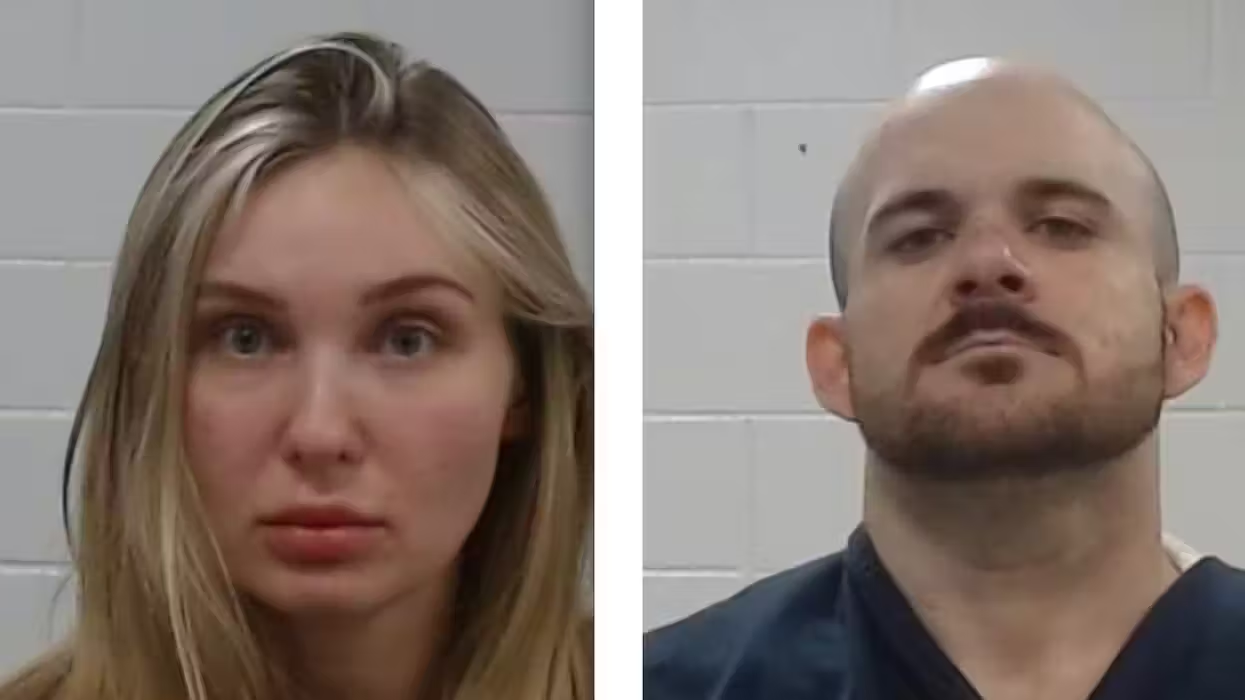
© 2025 Blaze Media LLC. All rights reserved.
Pictures Show Florida Home Above Deadly Sinkhole Demolished, Body Remains Buried Below
March 05, 2013
"It's kind of a bad omen."
SEFFNER, Fla. (TheBlaze/AP) -- As a backhoe chipped away Monday at the remains of a house where a sinkhole opened up and swallowed a man last week, another less dangerous sinkhole was discovered two miles away.
Though thousands of sinkholes erupt in Florida each year, most are small, few affect homes, and even fewer cause deaths. The sinkhole in the Tampa suburb of Seffner, however, was different.
Crews still were working to remove enough of the home to see more clearly inside the hole and determine what steps would come after the property is razed. There has been no definitive word as to whether the hole will be filled or whether the property could be built on again. But some experts say the fact that the sinkhole claimed a life - that of Jeff Bush, 37 - and that his body is expected to remain below the surface make rebuilding less likely.
"It's kind of a bad omen," said Dave Arnold, a hydrogeologist who has surveyed sinkholes for the Southwest Florida Water Management District. "This is an even worse omen with someone buried under there."
Bush's brother Jeremey told the press Monday he felt the crews could have tried harder to retrieve the body of his brother.
"You see all this heavy equipment? You see all that? The house is still standing. The only reason the house fell is because they put the machines on it," Jeremy Bush said. "I feel that they could have tried harder to try and get my brother out of there. That was my brother."
Watch Jeremy Bush talk about his brother and the "hell" his parents are going through right now:
Jeremy Bush broke down talking about his parents, saying "no one wants to bury their kid before they go."
"I just want my mom and dad to know that I tried to save their son, I tried my hardest," Jeremy Bush said weeping.
Arnold and other experts expect that once the house if destroyed, crews will work to fill in the hole and the lot will likely remain empty. Depending on the circumstances, past Florida sinkholes have been handled in varied ways.
In Maitland, Fla., a sinkhole 325 feet across was discovered in the 1960s as Interstate 4 was built. The highway was diverted around the area, but in 2008 workers began a $9 million project to fill and stabilize the sinkhole in preparation for a planned expansion of the roadway. Engineers say a road can be put over it now without any problems.
In Winter Park, Fla., a sinkhole in 1981 swallowed several sports cars, parts of two businesses, the deep end of an Olympic-size swimming pool and a three-bedroom house. It stretched about 350 feet across and caused $2 million in damages. The area became a temporary tourist attraction, but most of it was ultimately deserted, filled with water and became a lake.
And in 2002, a sinkhole about 150 feet across and 60 feet deep swallowed oak trees, sidewalk and park benches near an apartment complex in western Orange County, Fla. Two buildings with more than 100 residents were evacuated, but the structures were ultimately saved. Metal sheet piling was placed around the hole to stop the soil from sliding, and it was filled.
The second sinkhole found just two miles from the deadly one in Seffner is only reported to be about 10 feet deep and didn't result in any injuries or structural damage, but it makes the residents nervous none the less. Watch this report regarding the second hole:
Often, homeowners find clues to a pending problem by cracks in the foundation or a shifting floor. When that happens, and a sinkhole threat has been established, crews can pump a thick grout - a mixture of sand and cement - into the ground to fill the holes. It is a costly process, though it is typically paid by insurance companies, and can save a home from being destroyed.
"You inject the grout under pressure and attempt to fill all the cavities you can find," said Anthony Randazzo, a former University of Florida geology professor who started the consulting firm Geohazards, which handles about 1,000 cases a year of sinkholes and other settlement issues.
Though the specifics of what will happen to the Seffner property remain unknown, Randazzo said the hole would have to be filled to keep people from falling in it and to remove a potential neighborhood eyesore.
If the family decides to try to sell the property, they would be required to notify prospective buyers of the sinkhole issue.
Currently, various county agencies are at the sinkhole site to supervise, but officials haven't given a tally of the costs or said who is absorbing them.
For now, the focus in Seffner remains on a family mourning a loved one and trying to move on. Two large backhoes scraped and pulled at the house Monday afternoon, with one gently removing possessions including a flag, a jacket, family photographs, a bicycle and a china cabinet. The other machine loaded shattered pieces of furniture and construction material into a huge waste container.
The day's most solemn moment came at 4 p.m., when demolition stopped and workers joined family members for a brief ceremony. The many flowers and notes that had been left in front of the house were loaded into a tractor's bucket, which swung slowly toward the sinkhole and dropped the materials into the hole. There was applause from across the street.
Though the house's demolition was completed Monday, crews had not yet finished removing its foundation. After that is done, likely Tuesday, they planned to survey the hole to better understand its dimensions. Hillsborough County spokesman Willie Puz said workers would then "stabilize the hole," though he remained mum on details of what precisely would be done.
"Every sinkhole is different," he said.
Want to leave a tip?
We answer to you. Help keep our content free of advertisers and big tech censorship by leaving a tip today.
Want to join the conversation?
Already a subscriber?
more stories
Sign up for the Blaze newsletter
By signing up, you agree to our Privacy Policy and Terms of Use, and agree to receive content that may sometimes include advertisements. You may opt out at any time.
Related Content
© 2025 Blaze Media LLC. All rights reserved.
Get the stories that matter most delivered directly to your inbox.
By signing up, you agree to our Privacy Policy and Terms of Use, and agree to receive content that may sometimes include advertisements. You may opt out at any time.






